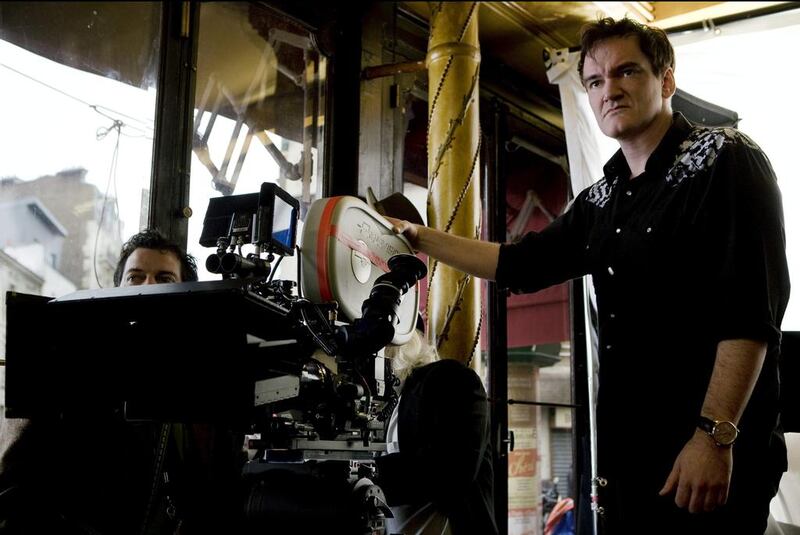Have the rumours of film’s death been greatly exaggerated?
You may have heard about the much-publicised “death of film” in recent weeks. That’s not “the death of films”, of course – any look at the slew of summer blockbusters released since Eid will reassure film fans that movies are still very much alive and kicking.
What we’re talking about is the death of the physical medium of celluloid film, that big, old-fashioned reel on which directors record their efforts and which, in recent years, has been slowly losing ground as new digital media take its place.
In April of last year, Fuji announced that it was going to stop producing its range of cinema film, leaving Kodak as the only remaining manufacturer. This summer, rumours began to surface that Kodak, too, would be jumping ship and closing its final film-manufacturing facility in Rochester, New York, following a drop of 96 per cent in sales of film – from 12.4 billion feet in 2007 to an estimated 449.3 million feet this year.
Kodak’s recent financial woes have been well-reported and it would be easy to blame the rise of digital photography and filmmaking for this, were it not for one irony: Kodak, or at least its engineer Steven Sasson, actually invented the digital camera in 1975.
Perhaps understandably, the board of the time was loath to invest in a product that could seriously cannibalise its core analogue-photography business, and the technology was laid to rest.
By the time others came up with their own versions years later, Kodak had missed the boat. A minor consolation may rest in the fact that one of the company’s biggest assets – valued at around US$2bn (Dh7.34bn) – is the intellectual property relating to other manufacturers using its groundbreaking technology in their cameras.
Luckily for celluloid fans, a host of acclaimed directors, including Quentin Tarantino, Martin Scorsese, Christopher Nolan and J J Abrams (who is shooting Star Wars: Episode VII on film, including location work in Abu Dhabi earlier in the year), rallied round and persuaded the major Hollywood studios to commit to buying a set amount of film for the next few years, whether they need it or not.
This will keep the Kodak factory running for now, but it sounds more like a stay of execution than a genuine reprieve – and what does that mean for local filmmakers without access to the studios’ stock?
The UAE film industry is no stranger to celluloid – the home-grown favourite City of Life, by the Emirati director Ali F Mostafa, was shot on 35mm film, though his new film From A to B was shot digitally.
Leo Joseph is the managing director of the Dubai post-production house, Mile Studios. He was previously the country manager for Kodak, which in days gone by operated a film-processing lab in Beirut, and Mile Studios remains the official motion-picture film distributor for Kodak in the Mena region to this day.
“We can get any kind of film stock within five days to any of our region,” says Joseph. “The issue now is the lack of processing labs. Here in Dubai, we still have DOPs [directors of photography] and directors who love to shoot on film, but lack of processing facility and telecine makes it impossible. It is not the budget but the lack of facilities.”
Aiham Ajib, from the award-winning Dubai production house Real Image, may well be the last director in the region to shoot on film. As recently as last month, his company was working on two films for National Day on 35mm, only to learn after the first day’s shoot that its preferred processing lab in Bangkok had closed.
“It was a real blow,” he says. “We had to switch to shoot on Alexa [a leading digital camera] for the second day and leave reels of film unused. We don’t use film so much, but sometimes when you need a certain look, it just can’t be done digitally.
“It’s not about the resolution or the technology, it’s simply the look and feel of film. I’m a creative and that’s what I care about, not how many pixels there are in it.”
Ajib did manage to find a lab in Turkey to process his film, but says the results were not of the same standard as the Bangkok lab.
“I think that might be the end for shooting on film in the region, especially as my director of photography told me I’m the only person he knows of still doing it,” says Ajib.
Of course, we'll probably still see the occasional big-budget Hollywood production passing through, just like Star Wars: Episode VII, with purist directors who have the influence and the access to facilities to insist on sticking to celluloid.
But on a day-to-day basis, it looks as if rolls of film may now be consigned to pictures in the history books of the region's film students – even the New York Film Academy Abu Dhabi ended its use of film in courses this year, opting instead to teach on the Red digital cine-camera.
cnewbould@thenational.ae





